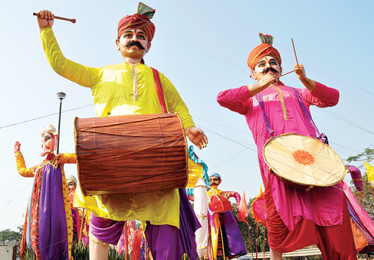History of Shigmo Festival
 History of Shigmo Festival
History of Shigmo Festival
Shigmo festival is the spring festival in Goa celebrated by the Konkani diaspora of Goa, with a lot of pompous and splendour. This festival takes place in the Phalguna month, according to the Saka calendar of the Hindu community living in Goa. This festival is celebrated around March every year. It is related to the Hindu lunar calendar and hence its date according to the Gregorian calendar varies. The Shigmo festival information is obtained from the Puranas. The word “Shigmo” is a Konkani term, which has been coined from Prakrit word ‘Suggimaho’ and the Sanskrit word, Sugrishmaka. There are two varieties of the Shigmo festival, the DhaktoShigmo and the VhadloShigmo. The DhaktoShigmo is celebrated by the rural population, farmers and the labour class, whereas the VhadloShigmo is of greater importance and is celebrated by everyone.
Shigmo celebrated in Konkan, especially in Goa is the festival of the common people. It is celebrated all over India but in different names. In North India, it is known as Holi, in Assam and Bengal, it is known as Dolyatra, in South India it is called Kamadahan and in Maharashtra, it is known as Shimga. The Shigmo festival information isacquired from the Puranas. Its origin can be traced back to various Puranic legends. According to one such legend, Hollika was the aunt of Prahlad who provoked her brother Hiranyakashapu to inflict torture on Prahlad to stop him from repeating the name of Lord. According to popular saying, Hollika was chased and abused by the people and was finally burnt to death. Others attribute the celebration of this festival to commemorate the death of Putana by Lord Krishna.
As per the truth ofShigmo festival information, it is believed that this festival is celebrated in the memory of the Indian cupid lord Kamadeva caused by the anger of Lord Shiva for the audacity of the former to disturb him while he was in penance. This festival also commemorates the homecoming of the brave soldiers who had left their families and home at the end of Dussehra to fight the invaders. Shigmo is also celebrated to welcome spring and is also known as a harvest festival.






